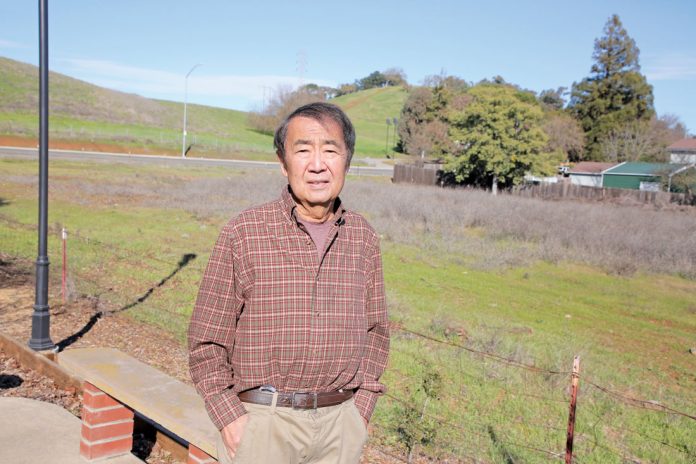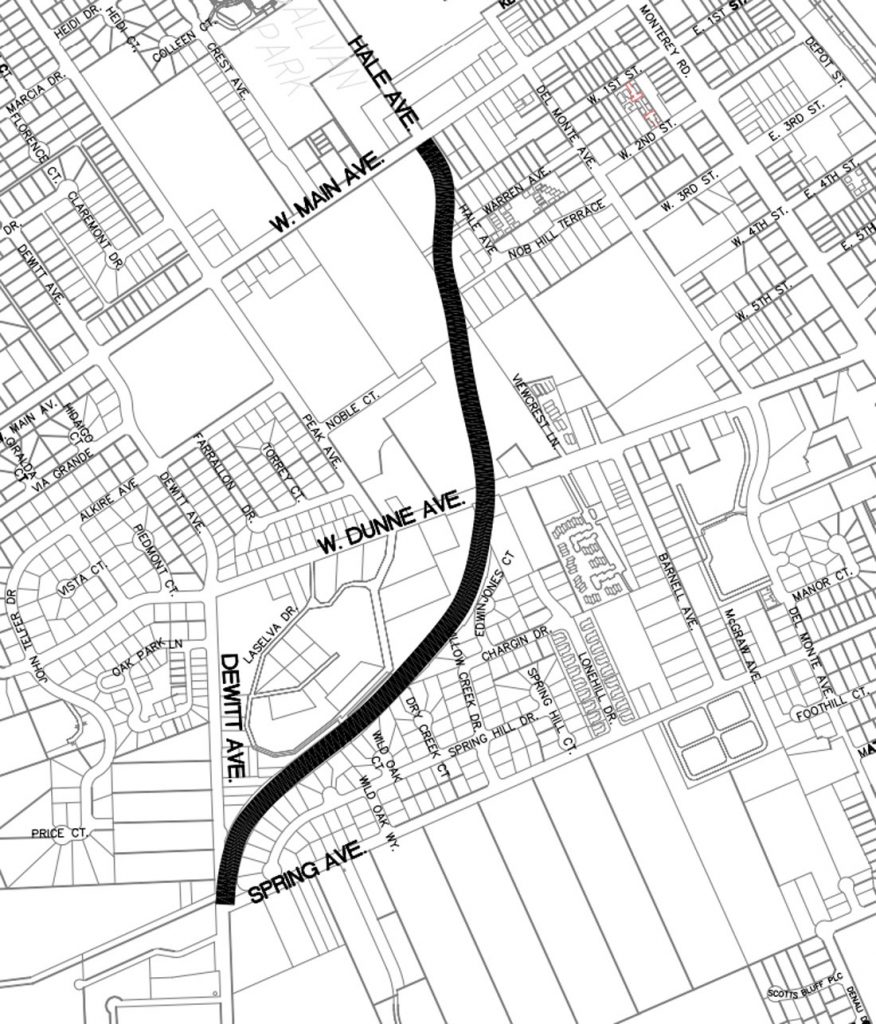
Fifty years after the extension of Hale Avenue was first conceptualized as a seamless bypass around the west side of Morgan Hill, city planners say they are now ready to put the project out to bid by March and begin construction as soon as this summer.
That’s the latest news on the project, formerly known as the Santa Teresa Boulevard extension, from a December 2019 city staff report. On Dec. 18, the council unanimously approved an amendment to the city’s contract with Mark Thomas & Company, which has been working on the project’s design since 2017.
The city’s Capital Improvement Program notes that the Hale Avenue Extension project is “at the 90 percent design stage.” While city officials are still in the process of acquiring a handful of properties needed for the roadway segment’s right-of-way and trying to secure the remainder of necessary construction funds, the Dec. 18 city staff report says there is enough money to put the project out to bid and begin construction by this summer.
The Hale Avenue extension, at a total cost of about $19.7 million, will connect Hale Avenue from its intersection with Main Avenue in a southwesterly direction with DeWitt Avenue at Spring Avenue. First approved by city planners in 1969, the project has been delayed over the years primarily due to lack of funding. Since the project’s conception, the city has acquired most of the property needed for the road’s right-of-way.
The city’s CIP describes the proposed new roadway as a “two-lane (one in each direction) multi-modal roadway with bike lanes and a separated pedestrian path.”
In 2016, Santa Clara County voters approved the Measure B sales tax for streets and roads improvements. The Hale Avenue extension was listed on the ballot as one of the projects to receive these funds, and the city now expects to use about $9.45 million from Measure B—before the project goes out to bid—to finance a portion of the estimated $14.5 million construction costs.
The city’s CIP notes that the project’s price tag has “increased significantly” as construction costs and land values have gone up over the past few decades. Remaining property acquisition costs are more than $2 million higher than originally expected.
Thus the city will continue to seek additional funding sources while completing the design.
The purpose of the Hale Avenue extension is to create a seamless bypass around the west side of Morgan Hill—an option that does not currently exist for commuters, emergency service providers and other motorists. Currently, drivers trying to get through Morgan Hill on the west side must zig-zag through a series of narrow, disconnected residential streets that are not designed for increasing volumes of commuter traffic. Intersections protected only by stop signs throughout the westside streets are frequently backed up with vehicles during rush hour, and residents who live on these streets often complain of speeding, reckless and inconsiderate drivers.
Since 1969, the need for the Hale Avenue extension has only grown, according to residents and city officials. Longtime Morgan Hill resident Jon Hatakeyama purchased a property on West Dunne Avenue in the early 1980s to house his dentistry practice. Now retired, Hatakeyama recently said he chose that site because it was adjacent to the Hale Avenue extension proposal.
For more than 40 years, Hatakeyama has remained a loyal advocate of the extension. He has attended numerous city planning meetings during that time to offer input and support.
“I always thought there should be another north-to-south route around Morgan Hill,” Hatakeyama said last week. “If there is an earthquake or fire, it’s another way to provide aid” to the affected areas.
Hatakeyama once wrote in a letter to the Times that the completion of the westside bypass will draw traffic from neighborhood streets, reducing the potential for pedestrian accidents; allow faster response from the El Toro Fire Station on the north side of town; provide swifter service for emergency medical services to Saint Louise Hospital to the south; provide more efficient routes for public school transportation; install new recreational opportunities with pedestrian and bike paths; and stimulate the local economy by improving access to businesses in and around the city’s downtown, which has been revitalized as a destination for visitors in recent years.
The property next door to the south side of Hatakeyama’s office building is an open swath of vacant land that the city acquired years ago for the Hale Avenue extension right-of-way.
Mayor Rich Constantine agrees the extension is long overdue. He noted that commuter traffic can snarl the streets on the west side as motorists who live and work outside Morgan Hill seek alternatives to US 101, Monterey Road and Santa Teresa Boulevard to get through the city. On the east side of Monterey Road, Butterfield Boulevard offers a continuous bypass around the downtown corridor but the lack of such an option on the west side is a major factor contributing to local congestion problems.
“It is something that is well needed. I’m looking forward to construction commencement, and to its finish date,” Constantine said.
With the council’s Dec. 18 contract amendment with Mark Thomas & Company, the city has dedicated about $683,000 for the design of the Hale Avenue extension. The contract includes the design of new traffic signals, curbs and gutters, sidewalks, intersections, street lighting needs, pavement layout and composition, soundwalls, utility undergrounding and other tasks.
Design work also includes coordinating with Valley Water, which plans to begin construction this summer on the downtown Morgan Hill phase of its Upper Llagas Creek Flood Control project. A portion of this project—also in the works since the 1960s—intersect the Hale Avenue extension route.
So far, the city has funded the extension’s design work with City Hall’s traffic impact funds.

The thick bold line in the map above shows where the Santa Teresa Boulevard/Hale Avenue extension will bypass the west side of Morgan Hill, connecting the Main/Hale Avenue intersection with DeWitt Avenue in a continuous route. Construction is expected to begin this summer.







